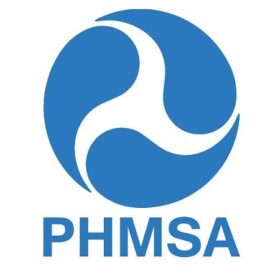
Comments on the U.S. EPA’s proposed rule Standards of Performance (New Source Performance Standards (NSPS)) for Stationary Spark Ignition Internal Combustion Engines and National Emission Standards for Hazardous Air Pollutants (NESHAP) for Reciprocating Internal Combustion Engines. The spark ignition internal combustion engine NSPS is proposed as 40 CFR Part 60, Subpart JJJJ and the NESHAP is proposed as revisions to 40 CFR Part 63, Subpart ZZZZ. The proposal was published in the Federal Register on June 12, 2006, at 71 FR 33804.
INGAA submitted more than 100 pages of comments and a summary is included as part of the 8 page cover letter.
Although INGAA supports a rule that provides additional flexibility and compliance options, the certification provisions cause serious concern. The IC Engine Proposed Rules rely extensively on mobile source and nonroad regulations for IC engines, which is not a well-established approach for stationary sources or natural gas-fired units. This is acknowledged in the proposed standard through the use of a voluntary certification program for natural gas-fired equipment larger than 25 horsepower. However, by modeling this stationary source rulemaking after mobile and nonroad standards, EPA has introduced concepts and requirements that are illconceived for stationary sources and, if not revised, will surely result in confusion and conflicting requirements when the standards are implemented at the state and regional level. There are many examples of differences between mobile source “consumer product” engines and stationary source engines that are not adequately considered in the Proposed Rule.
For example:
• Certification-based emissions from test cell testing, which allows “engine adjustment”, is not the same as “not to exceed” compliance tests conducted in the field and does not consider factors such as operating conditions (e.g., application), fuel quality, and environmental factors (e.g., elevation). Margins for certified emissions relative to permitted “not to exceed” limits are not considered in the Proposed Rule.
• Manufacturer based O&M procedures designed for consumer product approaches are inappropriate for industrial applications. They do not consider the wealth of experience that industrial operators have integrated into owner/operator O&M procedures over decades of engine operation for a breadth of industrial applications and processes. In addition, manufacturers do not have the capacity (or willingness based on corporate risk management) to properly consider alternative procedures.
• The concept of “useful life” has application in the mobile source sector; however, a stationary source useful life is well in excess of 8,000 hours – the maximum “useful life” in the proposal. While 8,000 hours corresponds to about 150,000 to 400,0000 miles or more for a vehicle (i.e., a significant portion of the practical life), it only corresponds to eleven months of continuous stationary source operation – which is a very small percentage of the anticipated life for a stationary gas-fired engine. This concept is flawed and entirely inappropriate for stationary sources, where engine “useful life” is measured in years or decades, not hours.
• Certified mobile source engines are not tested “in use” in most cases. In addition, subsequent mobile engine tests are completed in a different regulatory context that does not include rigorous and punitive enforcement. Even if certified, many stationary engines affected by the Proposed Rule will be tested due to Federal, state or local requirements. These tests will be completed under a strict enforcement regimen enforcement that is not consistent with the mobile source arena.
• Fuel quality is typically specified or controlled in mobile applications. This is not the case for gas-fired stationary engines, which are the vast majority of engines affected by the proposed NSPS.
• Pollutants of interest vary. NMHC emissions are regulated under mobile source rules and
• VOCs are regulated for stationary sources. The definition of these hydrocarbon categories, their measurement, and consideration of species such as aldehydes can have considerable impact on the feasibility of the proposed emission limit – especially for gas-fired engines that have a limited mobile source regulatory legacy.







